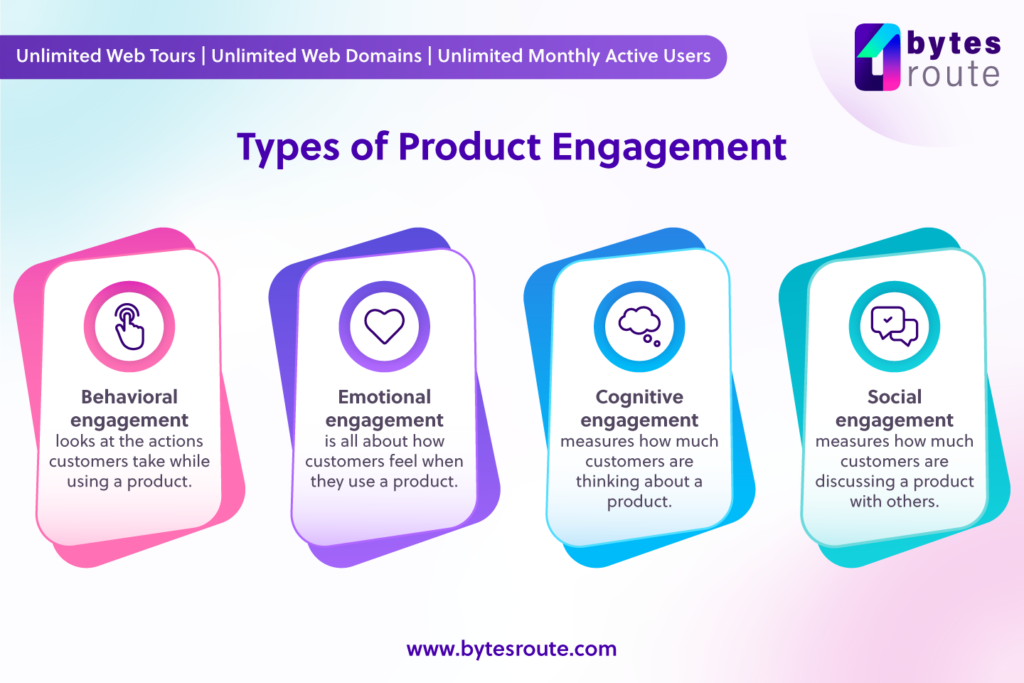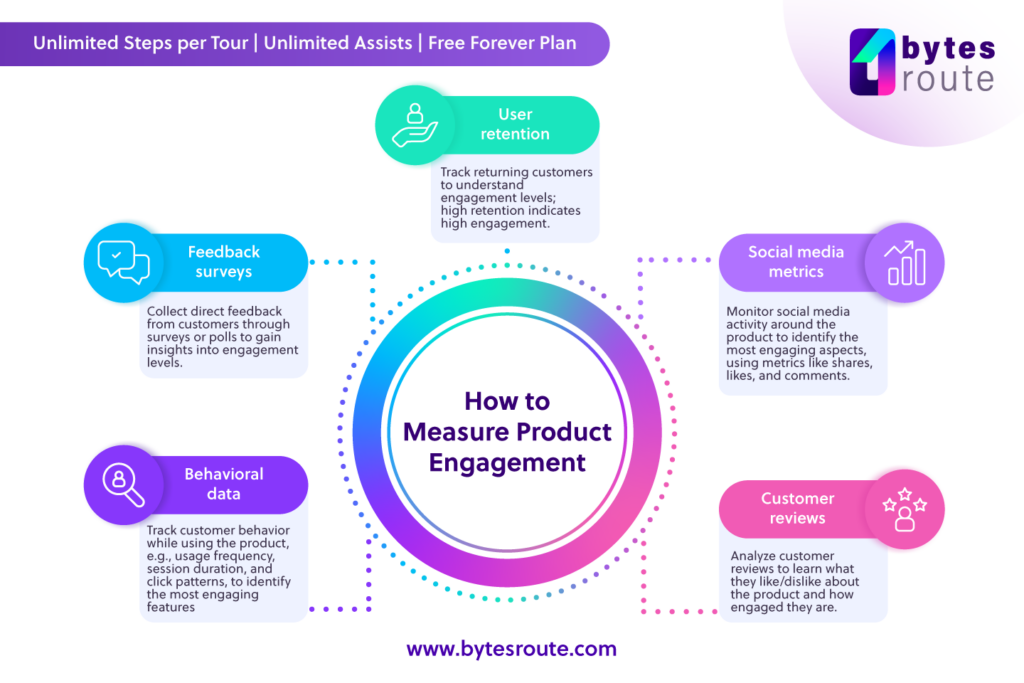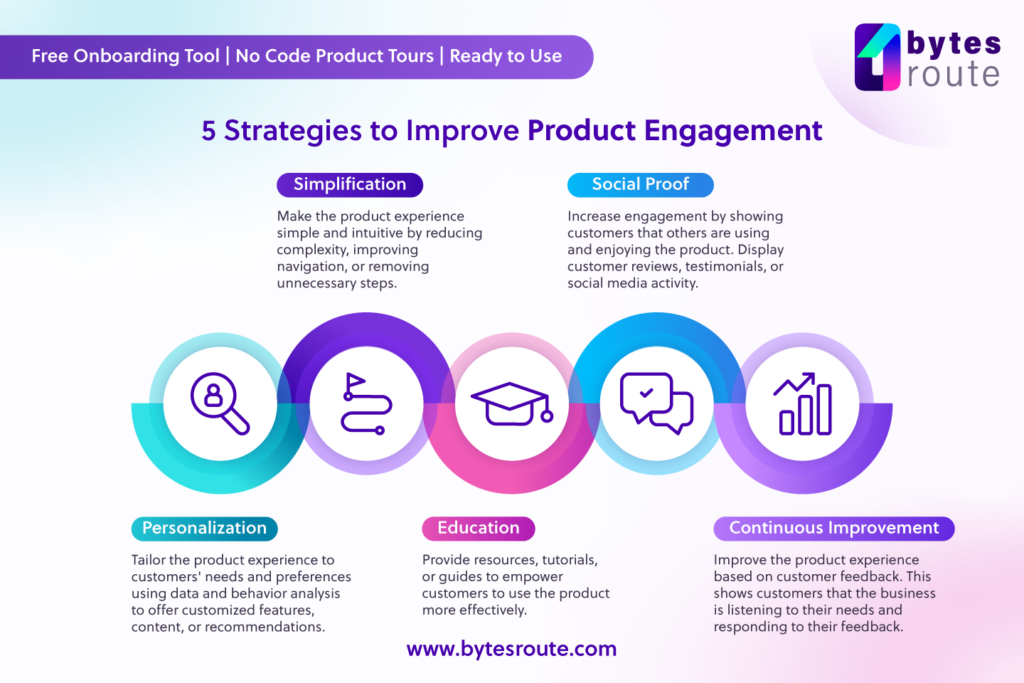What is Product Engagement?
Product engagement is all about how much people are using and enjoying a product. It’s a way to measure how interested and invested customers are in a particular product. This kind of information is key for businesses and has a big impact on their success.
So, when a product is engaging, customers will use it more and have a better overall experience with it. This can happen for a bunch of reasons, like if the product has really cool features, is easy to use, or has great quality. If a business can improve these aspects of a product, it can increase engagement and build a loyal customer base.
All in all, product engagement is a key concept for businesses to understand if they want to create products that people will love and use for a long time. By focusing on making their products more engaging, businesses can improve customer satisfaction and ultimately drive growth and success.
Types of Product Engagement

When it comes to measuring how customers are interacting with their products, businesses can track several types of product engagement. Here are a few common types to consider:
- Behavioral engagement: This type of engagement looks at the actions customers take while using a product. If a customer regularly uses specific features, it’s a good sign they’re behaviorally engaged.
- Emotional engagement: This type of engagement is all about how customers feel when they use a product. If a product elicits positive emotions like joy or excitement, that’s a sign of emotional engagement.
- Cognitive engagement: This type of engagement measures how much customers are thinking about a product and how invested they are mentally. If a customer is constantly brainstorming new ways to use a product, that’s a good sign of cognitive engagement.
- Social engagement: This type of engagement measures how much customers are discussing a product with others. If customers are recommending a product to friends or sharing it on social media, that’s a sign of social engagement.
By tracking these types of engagement, businesses can better understand how customers are interacting with their products. This can help them identify opportunities to improve their products and increase engagement, which can lead to a more loyal customer base.
Why is Product Engagement important?
Product engagement is an essential metric for businesses looking to grow a loyal customer base and increase long-term revenue. Here’s why:
- Understanding customers: By tracking different types of engagement, businesses can gain valuable insights into how customers are interacting with their products. This helps businesses identify which features are popular and where improvements can be made to enhance the customer experience.
- Driving loyalty: Engaged customers are more likely to remain loyal over time and recommend the product to others. This helps businesses grow their customer base and improve customer retention.
- Improving product development: Product engagement data can be analyzed to identify which features are popular and which areas need improvement. This helps businesses make more informed decisions when developing new products or improving existing ones.
- Boosting revenue: Engaged customers are more likely to make repeat purchases and spend more money over time. Increasing product engagement can boost customer lifetime value and revenue.
Overall, product engagement is a vital metric for businesses to track and analyze. By doing so, they can make better decisions, improve the customer experience, and ultimately drive growth and success.
How to Measure Product Engagement

Measuring product engagement is an important aspect of understanding how customers interact with a product. There are different ways to measure product engagement:
- Behavioral data: This involves tracking the behavior of customers while using a product. By analyzing data such as usage frequency, session duration, or click patterns, businesses can identify which features or functionalities are most engaging.
- Feedback surveys: Collecting feedback directly from customers through surveys or polls can provide valuable insights into engagement levels. This feedback can be gathered through various methods such as email campaigns, in-app prompts, or other means.
- User retention: Tracking how many customers continue to use a product over time can provide insight into engagement levels. For example, a high percentage of returning customers is an indication of high engagement.
- Social media metrics: Monitoring the social media activity around a product can provide insights into how engaged customers are. Metrics like shares, likes, and comments can help businesses understand which aspects of their products are most engaging.
- Customer reviews: Analyzing customer reviews can give businesses a sense of how engaged their customers are and what they like or dislike about a product. Reviews can be collected through surveys or by monitoring review sites like Yelp or Google Reviews.
By measuring product engagement through these methods, businesses can gain valuable insights into their customers’ preferences and behaviors. This information can then be used to improve the customer experience, optimize product features, and build a more loyal customer base.
Strategies for Improving Product Engagement

Improving product engagement is a key objective for any business looking to build a loyal customer base. To achieve this, businesses can use a range of strategies that aim to encourage customers to interact with their products more frequently and effectively. Here are five effective strategies for improving product engagement:
- Personalization: By personalizing the product experience, businesses can create a deeper connection with their customers. This can involve tailoring the product to each customer’s individual needs and preferences by using data and behavior analysis to offer customized features, content, or recommendations.
- Simplification: Making the product experience simple and intuitive is another important way to improve engagement. This can be achieved by reducing complexity, improving navigation, or removing unnecessary steps.
- Education: Providing educational resources, tutorials, or guides can empower customers to use the product more effectively and improve engagement. This can include in-app tutorials, online videos, or knowledge bases.
- Social Proof: Demonstrating social proof can help increase engagement by showing customers that others are using and enjoying the product. This can be achieved by displaying customer reviews, testimonials, or social media activity.
- Continuous Improvement: Businesses can improve engagement by continuously updating and improving the product experience based on customer feedback. This shows customers that the business is listening to their needs and responding to their feedback.
By using these strategies, businesses can improve product engagement, build customer loyalty, and increase retention rates. However, it’s important to remember that each business and product is unique, and the most effective strategies for improving engagement will depend on the specific needs and preferences of the target audience.